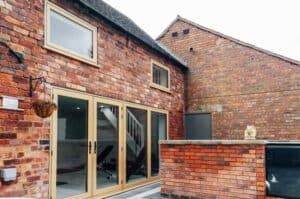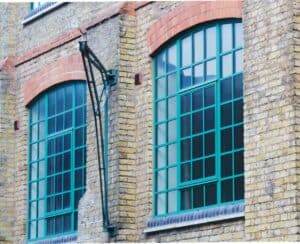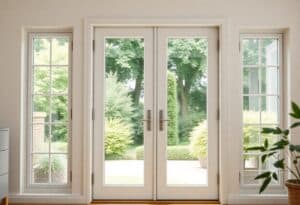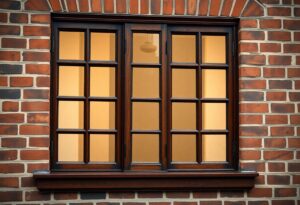With the right approach, you can breathe new life into your home’s timber sash windows, preserving their traditional charm while enhancing their durability. This blog post will guide you through the process of restoring these beautiful features using high-quality restoration fittings that not only maintain their aesthetic appeal but also ensure longevity. You’ll discover why investing in expert restoration is vital and how it can add value to your property.

Understanding Timber Sash Windows
While exploring the world of timber sash windows, it’s crucial to appreciate their unique characteristics and the role they play in maintaining the charm of traditional architecture. These windows, known for their vertical sliding mechanism, have a distinctive appeal that reflects a bygone era. To ensure these windows maintain their beauty while improving their functionality, you may consider exploring How to Modernise Period Sash Windows Without Compromise. By using high-quality restoration fittings and modern techniques, you can preserve their essence without significant alterations.
History and Importance
Sash windows originated in the 17th century and rapidly became a popular choice in Georgian and Victorian architecture. They were designed primarily for functionality, allowing for better ventilation and increased natural light within homes. Over the centuries, the significance of these timber windows has evolved, representing not only practicality but also a distinctive aesthetic that contributes significantly to property value. Their unique design helps to convey your property’s historical narrative and cultural heritage.
| Year | Significance |
| 17th Century | Origins of sash window design |
| 18th Century | Rise in popularity, especially in Georgian architecture |
| 19th Century | Victorian refinement and adaptation |
| Present Day | Importance in heritage preservation and property market |
Types of Timber Sash Windows
Timber sash windows come in various styles, each with distinct features tailored to different architectural requirements. The most common types include the single-hung sash, which opens from the bottom, and the double-hung sash, where both top and bottom sashes are operable. Additionally, there are variations like sliding or horned sashes, which provide increased flexibility for ventilation. Understanding these options allows you to make more informed decisions about your restoration projects.
| Type | Characteristics |
| Single-Hung | Bottom sash opens, top remains fixed |
| Double-Hung | Both sashes can be opened for ventilation |
| Sliding Sash | Operable sash slides vertically |
| Horned Sash | Extended horn detail for added stability |
| Georgian Sash | Smaller panes separated by glazing bars |
Timber sash windows can offer both aesthetic appeal and functionality, but their maintenance is key to ensuring longevity. You may encounter wear and tear over time, including rot or fading paint, which can compromise their beauty and performance. Thus, it’s vital to keep them in good condition, allowing you to enjoy the charm they bring to your home. Assume that with proper care, these timeless windows can continue to enhance your property for generations to come.
Signs of Wear and Damage
It is vital to recognise the signs of wear and damage in your timber sash windows to preserve their aesthetic appeal and functionality. Over time, exposure to the elements can lead to several issues, which may compromise the integrity of the windows. You may begin to notice peeling paint, water stains, or even spots of rot, all of which can indicate underlying problems that need addressing promptly.
Common Issues
Among the frequent problems associated with timber sash windows are warped frames, deteriorating glazing putty, and drafts that can disrupt your indoor comfort. These issues often arise when moisture seeps into the wood, causing it to swell and lose its shape. Additionally, failing to maintain the paint can leave the wood exposed, leading to progressive damage from sunlight and rain, which can trigger a range of more significant structural complications.
Assessing Condition
Around your home, it’s important to conduct regular assessments of your timber sash windows to identify any signs of wear or damage early on. Look for signs such as cracks in the glass, broken cords, and misaligned sashes that do not open or close smoothly. Such issues can greatly diminish the functionality and safety of your windows, so ensuring you address these concerns as soon as possible is vital.
In addition, be attentive to the wood itself; check for soft spots that indicate rot or signs of insect damage, which can exacerbate the issue if left untreated. Regular inspections will help you maintain the integrity and charm of your traditional windows, allowing you to enjoy their timeless appearance while ensuring their performance remains reliable and effective.
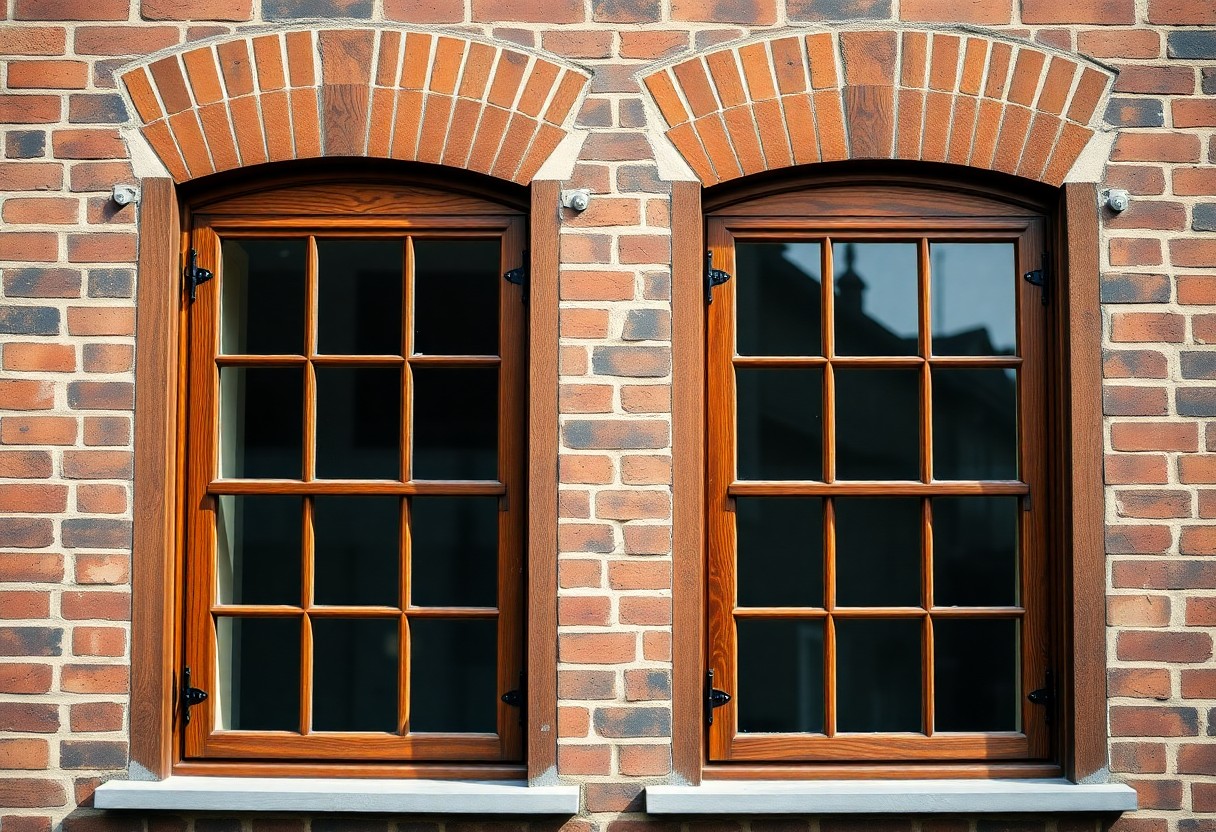
Restoration Techniques
Some effective restoration techniques can help you maintain the beauty and functionality of your timber sash windows. Understanding these methods not only allows you to restore your windows but also enhances your home’s charm and character. For insights on proper care, you may refer to A Guide to Sash Windows Design & Care | London. These techniques range from repairing frames to replacing important components, ensuring that your windows retain their traditional elegance while operating smoothly.
Repairing Wood Frames
An important aspect of restoring timber sash windows is addressing any damage to the wood frames. Over time, exposure to the elements can result in rot, which, if left unattended, might compromise the structural integrity of your windows. By carefully assessing the condition of the wood, you can determine if simple sanding and re-sealing will suffice or if more extensive repairs are needed. It’s vital to use the appropriate fillers or patches, as this will prolong the lifespan of your windows and enhance their aesthetic appeal.
Replacing Sash Cords and Weights
With regular use, the sash cords and weights in your timber sash windows can wear out, leading to difficulties in opening and closing them. When you notice signs of fraying or snapping, it’s best to take immediate action to avoid further complications. By replacing these components, you ensure that your windows operate effectively while safeguarding their traditional charm.
The process of replacing sash cords and weights requires precision and patience. Begin by carefully removing the sashes and inspecting the pulleys to ensure they are also in good working order. If you come across any issues, repairs should be made to the pulleys to prevent further strain on the new cords. It’s important to use high-quality cords that can withstand the weight of the sash while maintaining functionality for years to come. By undertaking this task, you re-invigorate your windows, ensuring they remain a beautiful feature of your home.
Choosing Restoration Fittings
All restorations call for careful consideration of the fittings you choose to complement your timber sash windows. These fittings not only serve a functional purpose but also play a significant role in preserving the traditional charm of your home. Selecting the right materials can dramatically influence both the longevity and aesthetic appeal of your windows, ensuring they stand the test of time while reflecting the character of your property.
Materials and Durability
Across various types of restoration fittings, the materials used significantly affect their overall strength and lifespan. Options such as brass or stainless steel are often recommended due to their resistance to corrosion and wear. Opting for fittings made from these materials ensures that your restoration will endure harsh weather conditions without diminishing in quality, allowing you to enjoy your elegant windows without the frequent need for replacements.
Aesthetic Considerations
Beside durability, you should also take into account the visual appeal of the fittings. Choosing styles that mirror the original fittings will help maintain the historical integrity of your windows. Consider elements such as colour, finish, and design; these details play an vital role in either enhancing or detracting from the overall look of your home. A well-chosen fitting won’t just work effectively, but will also harmonise with your existing architecture.
Plus, the right aesthetic fittings can elevate your home’s curb appeal while allowing you to express your personal style. It’s wise to avoid overly modern designs that could clash with your traditional sash windows; instead, opt for fittings that echo classical styles, such as period-appropriate pulls and stays. This attention to detail not only boosts the value of your home but also creates a cohesive look that ensures your property remains timeless.
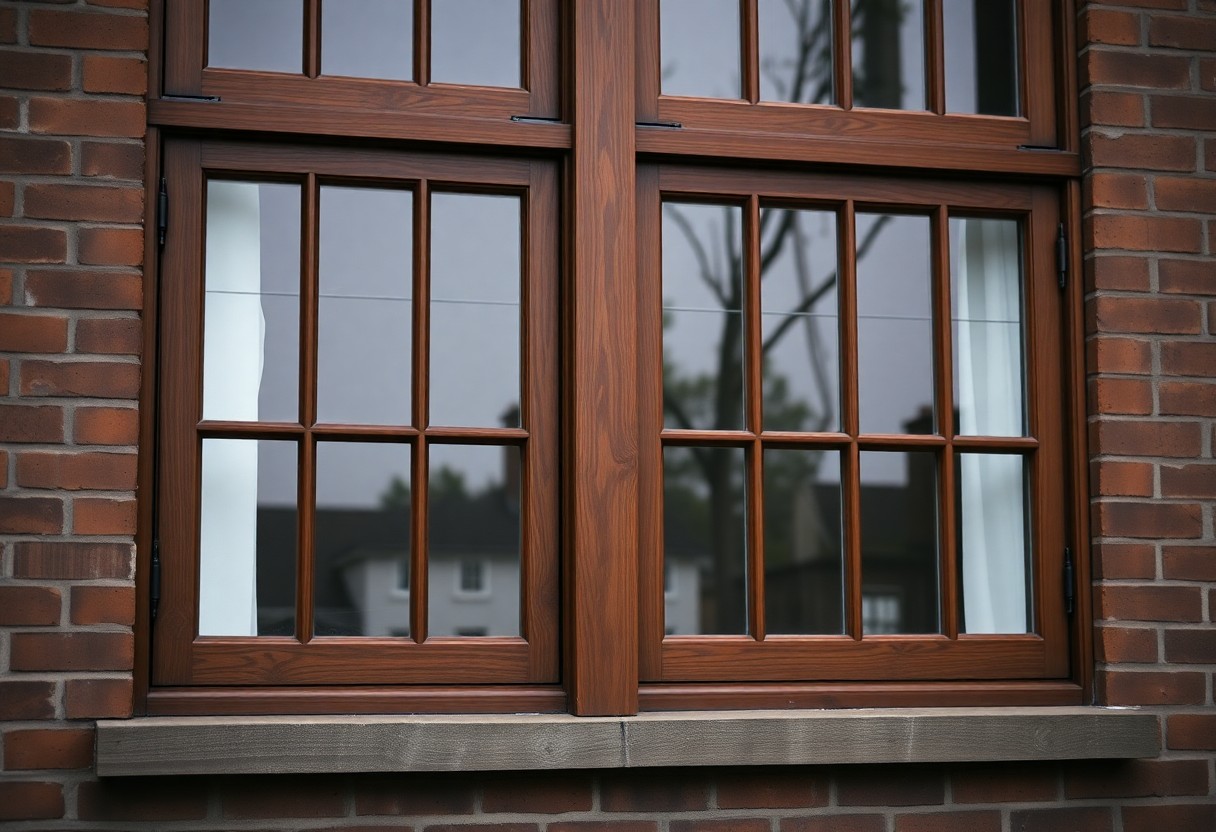
Installation Process
Your journey into restoring timber sash windows begins with understanding the installation process, which is crucial for achieving a satisfactory result. This process not only restores the traditional charm of your windows but also enhances their durability. It’s vital to ensure every step is executed correctly to prolong the lifespan of the restoration fittings you have chosen, keeping your windows in excellent condition for years to come.
Tools and Equipment Needed
An effective installation demands a range of tools and equipment to ensure the job is completed to a high standard. You will need a selection of hand tools such as a hammer, chisel, and screwdriver, as well as measuring tape for accuracy. Power tools can also be utilised to expedite the process, including a drill and saw for cutting through materials. Safety equipment, including goggles and gloves, is non-negotiable to protect yourself during the installation.
Step-by-Step Guide
Process your installation in a systematic manner to achieve the best outcome. The table below outlines the steps you should follow:
| Step | Description |
|---|---|
| 1 | Remove the existing window fittings carefully. |
| 2 | Inspect the window frame for any signs of damage. |
| 3 | Apply any necessary repairs to the frame. |
| 4 | Install the new sash window fittings. |
| 5 | Ensure alignment and test the functionality of the windows. |
Also, focusing on each step methodically will provide insight into any challenges that may arise. You should prioritise safety at every stage. For instance, when removing fittings, take care not to damage the original frame, as this could complicate the restoration process. Preparing the frame adequately before fitting the new parts will ensure a snug fit and optimal performance. Additionally, keeping a tidy workspace will help you maintain order and efficiency, as a cluttered area can lead to mishaps and slow down your progress.
| Tip | Details |
|---|---|
| Safety First | Always wear protective gear to minimise the risk of injury. |
| Layering Technique | Consider pre-painting the fittings to save time and achieve a professional finish. |
| Alignment Check | Regularly check the alignment of the window to avoid operational issues. |
Maintenance Tips
Once again, ensuring the longevity of your timber sash windows requires regular attention and care to maintain their traditional charm and durability. Here are some key maintenance tips to consider:
- Inspect the windows regularly for any signs of wear or damage.
- Clean the frames and glass at least twice a year to remove dirt and grime.
- Check for proper operation of the sliding mechanism to avoid sticking.
- Maintain any paint or stain finishes to protect the wood from moisture.
- Lubricate moving parts to ensure smooth operation.
After implementing these practices, your windows will not only enhance the aesthetics of your home but will also promote their overall health and functionality.
Regular Care
An imperative part of maintaining your timber sash windows is developing a routine for care. This involves regular inspections for wear and tear, which can help you identify any potential issues before they escalate. By proactively checking for issues like cracked paint or rotting wood, you can address them swiftly and preserve the structural integrity of your windows.
Additionally, it is advisable to clean the glass and surrounding frames diligently. Using a gentle cleaner and a soft cloth will prevent scratches while removing unsightly dirt. By committing to this regular care, you ensure that your windows remain a lovely feature of your home and offer lasting performance.
Long-Term Preservation
To ensure the long-term preservation of your timber sash windows, it is vital to take measures that protect them from environmental damage. This can include applying high-quality paints or stains to the wood, which helps to repel moisture and prevents rot. Furthermore, you should inspect the window seals and glazing regularly to keep out draughts and ensure energy efficiency.
Indeed, implementing these preservation strategies not only extends the life of your windows but also enhances the overall aesthetic of your property. By choosing the right materials and taking the time to carry out routine maintenance checks, you can maximise the performance of your windows while avoiding costly future repairs. Protecting your timber sash windows ensures that they continue to reflect the traditional charm of your home for years to come.
Conclusion
To wrap up, restoring timber sash windows not only enhances the aesthetic appeal of your property but also guarantees the longevity and functionality of these traditional fixtures. With the right restoration fittings, you can breathe new life into your windows, maintaining their character while ensuring they meet modern performance standards. By investing in quality materials and expert craftsmanship, you can successfully preserve the charm of your historic windows for future generations to appreciate.
Furthermore, engaging in the restoration process allows you to contribute to the sustainability of your home. By choosing to restore rather than replace, you are not only honouring the architectural history of your property but also reducing waste. Your commitment to preserving timber sash windows with durable restoration fittings demonstrates an appreciation for traditional methods whilst embracing contemporary enhancements, resulting in a harmonious balance of old and new in your living space.
FAQ
Q: What are timber sash windows?
A: Timber sash windows are a type of window traditionally found in historic and period properties. They consist of one or more movable panels (sashes) that slide vertically or horizontally within a frame. These windows are often valued for their aesthetic appeal, contributing to the character and charm of a building.
Q: Why should I consider restoring timber sash windows instead of replacing them?
A: Restoring timber sash windows can maintain the authenticity and historical value of your property. Restoration often proves to be more cost-effective than complete replacement and can significantly enhance the property’s appearance. Additionally, by using quality restoration fittings, you can improve the functionality and energy efficiency of the windows while preserving their traditional charm.
Q: What are restoration fittings and how do they benefit timber sash windows?
A: Restoration fittings are specially designed components that help refurbish and enhance the function of existing timber sash windows. These fittings, which may include pulleys, cords, and weather-stripping, ensure smoother operation, improve insulation, and prevent draughts and leaks. By using durable materials, they also extend the lifespan of the windows.
Q: How can I tell if my timber sash windows need restoration?
A: Signs that your timber sash windows may need restoration include difficulty in opening or closing the sashes, visible drafts, water ingress, or noticeable gaps around the frame. Additionally, if you observe peeling paint, rotting wood, or damaged components, it is advisable to consult with a professional for a comprehensive assessment.
Q: Is it expensive to restore timber sash windows?
A: The cost of restoring timber sash windows varies depending on the extent of the work required and the materials used. Generally, restoration can be more economical than full replacement. It is beneficial to obtain multiple quotes from experienced professionals to ensure you receive value for your investment.
Q: Can I restore timber sash windows myself, or should I hire a professional?
A: While some homeowners may be able to undertake minor repairs themselves, such as painting and replacing fittings, the restoration of timber sash windows can often require specialised skills and tools. For extensive work, it is advisable to hire a professional experienced in restoring sash windows to ensure a quality finish and adherence to conservation standards.
Q: What maintenance should I perform on my restored timber sash windows?
A: Regular maintenance of your restored timber sash windows includes repainting every few years, checking for any signs of rot or wear, and inspecting the functionality of the sashes and fittings. Periodically, you should clean the window tracks and ensure that the weather-stripping remains effective for optimal performance.


